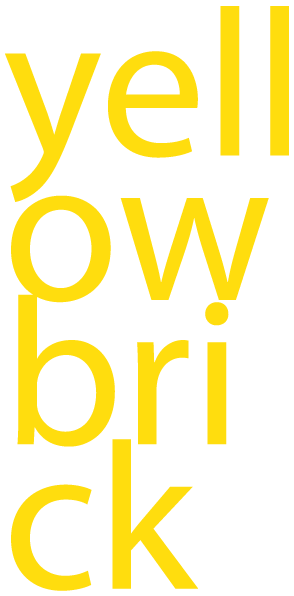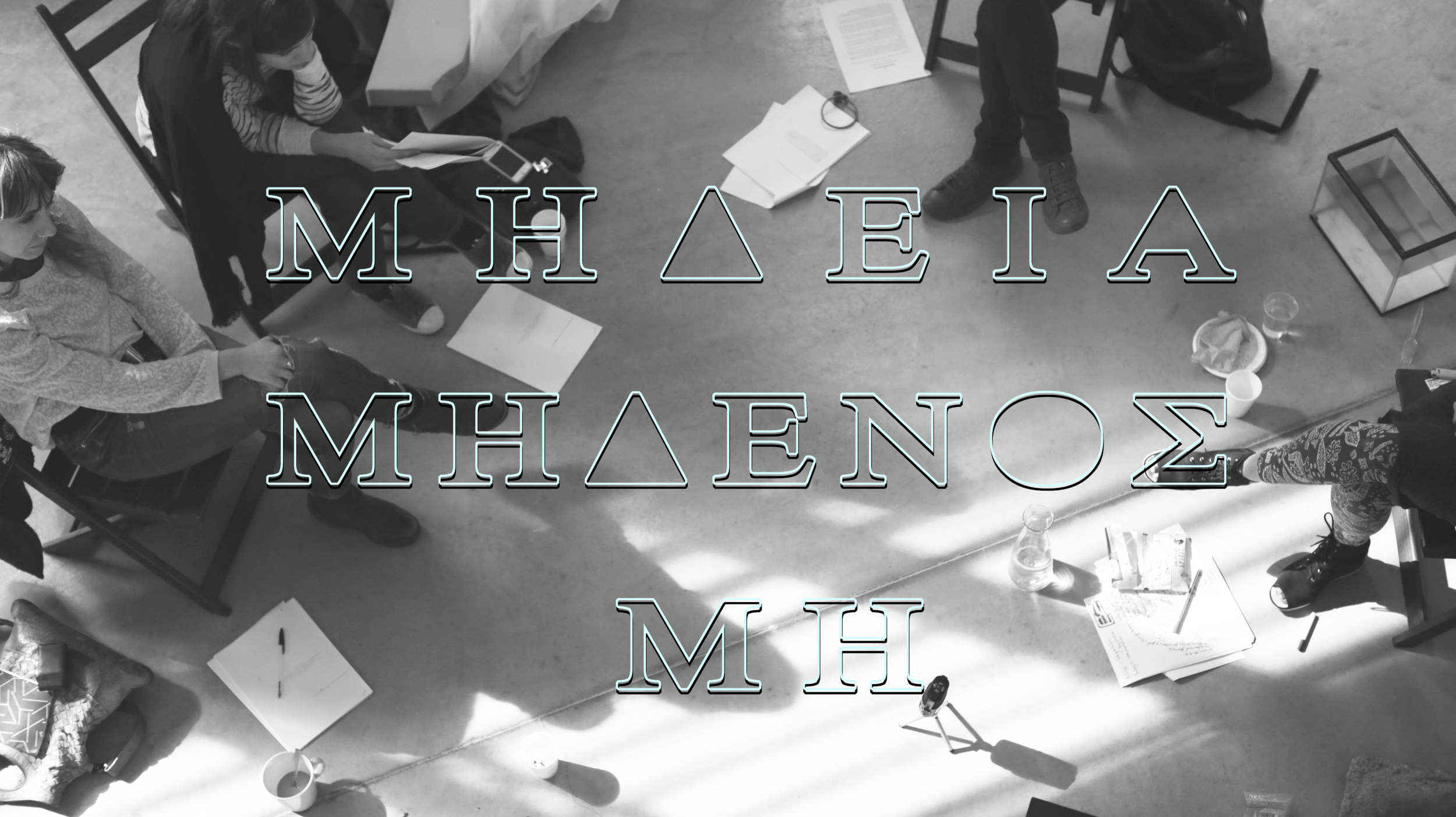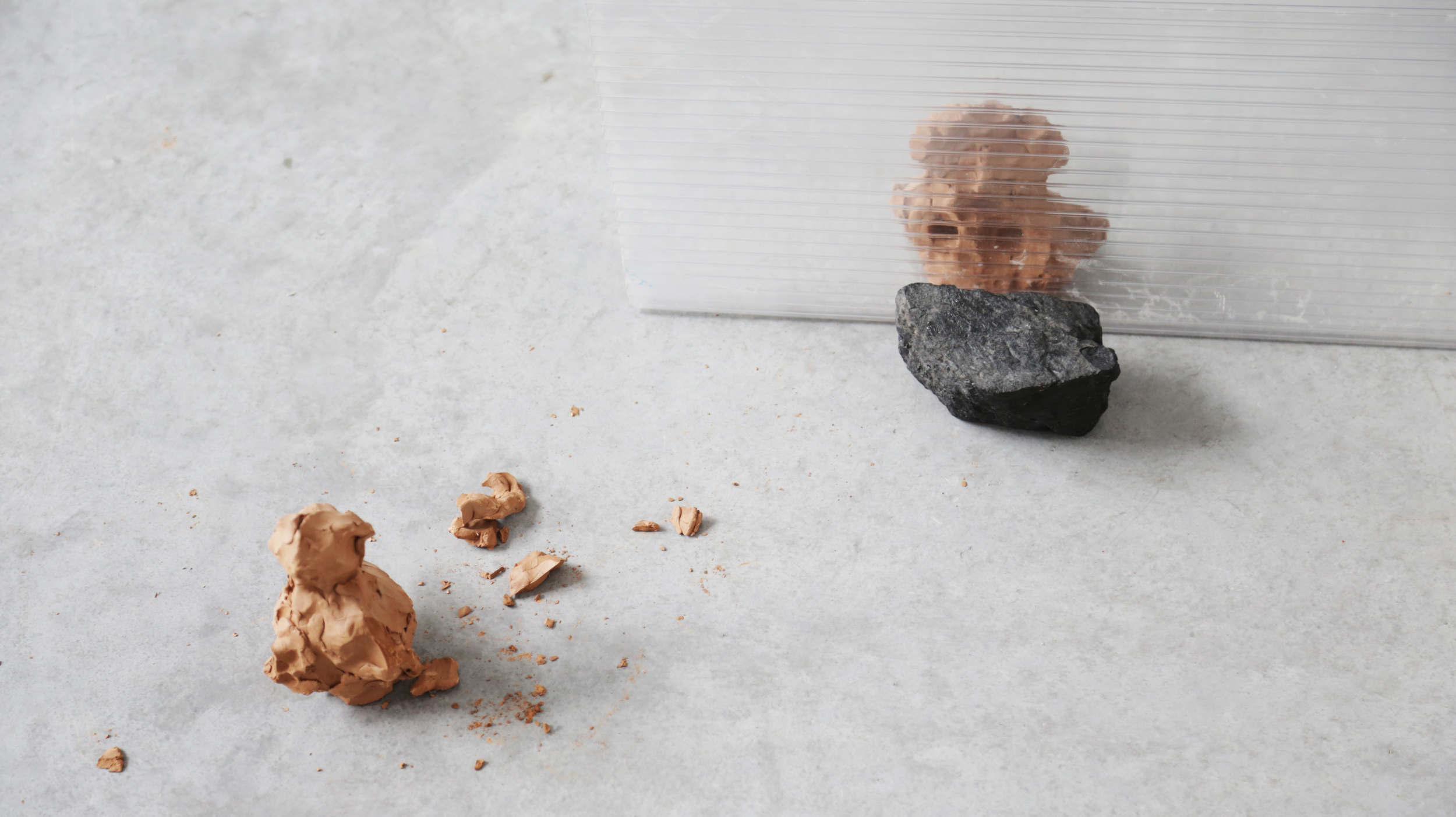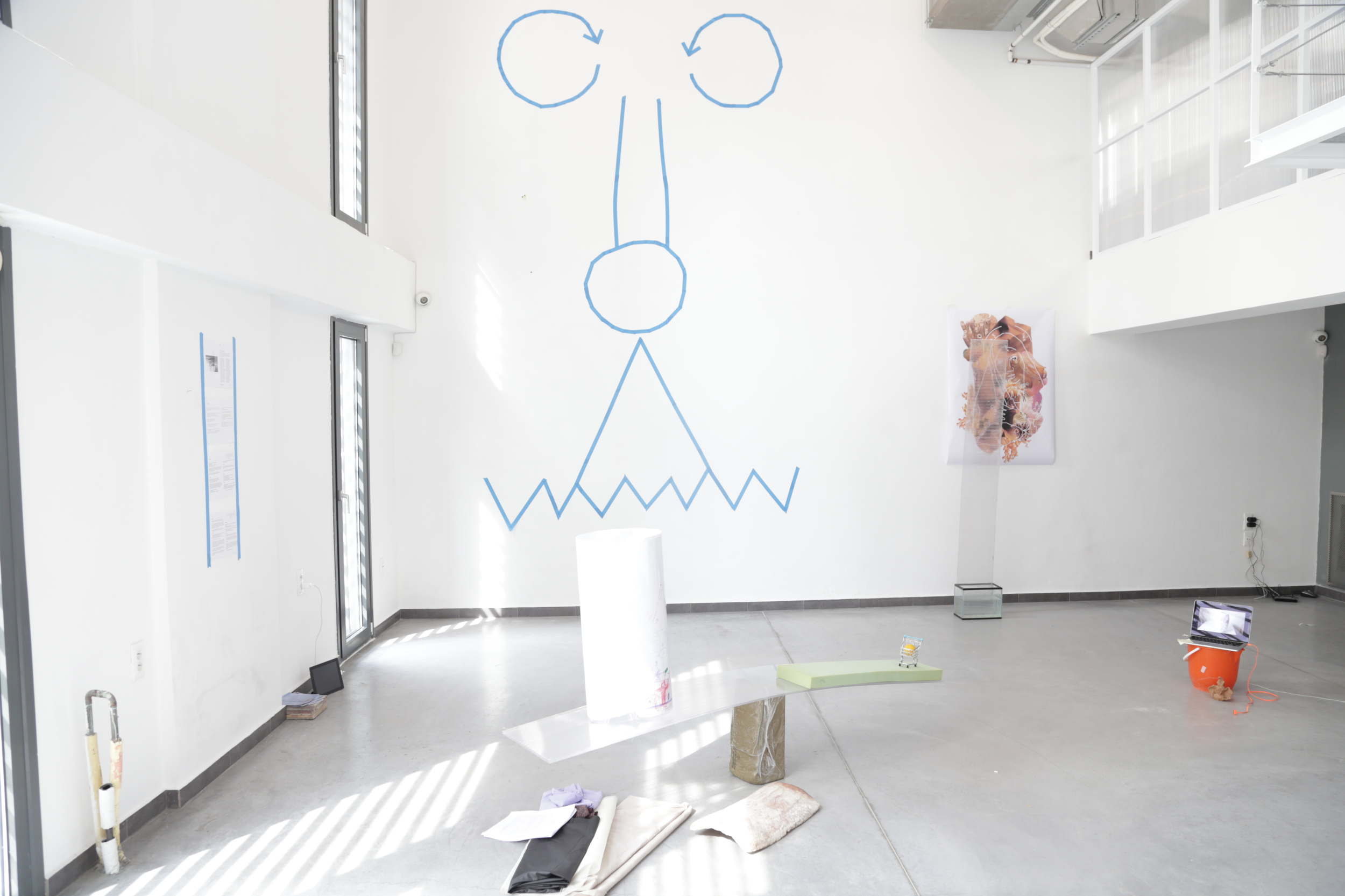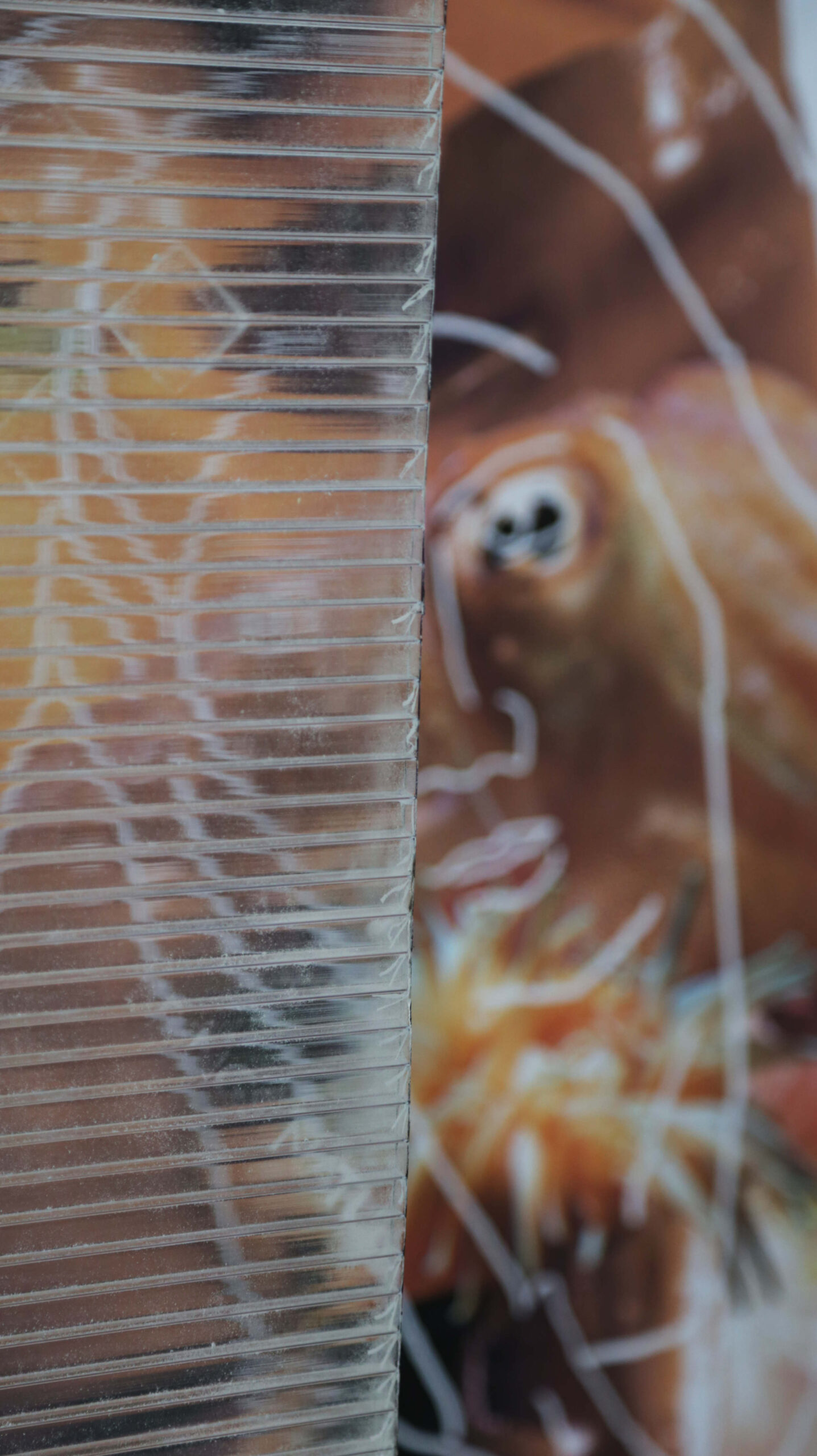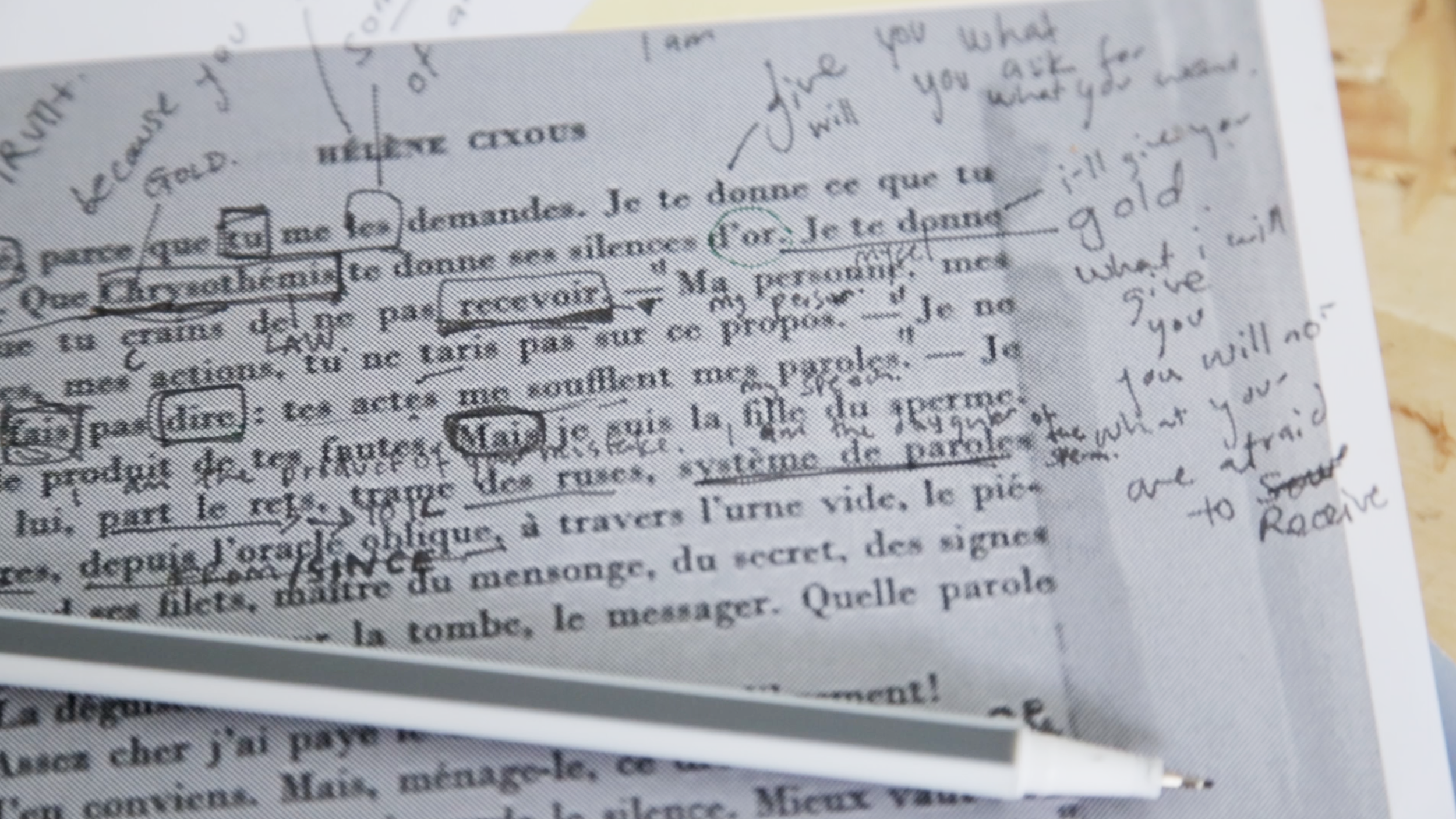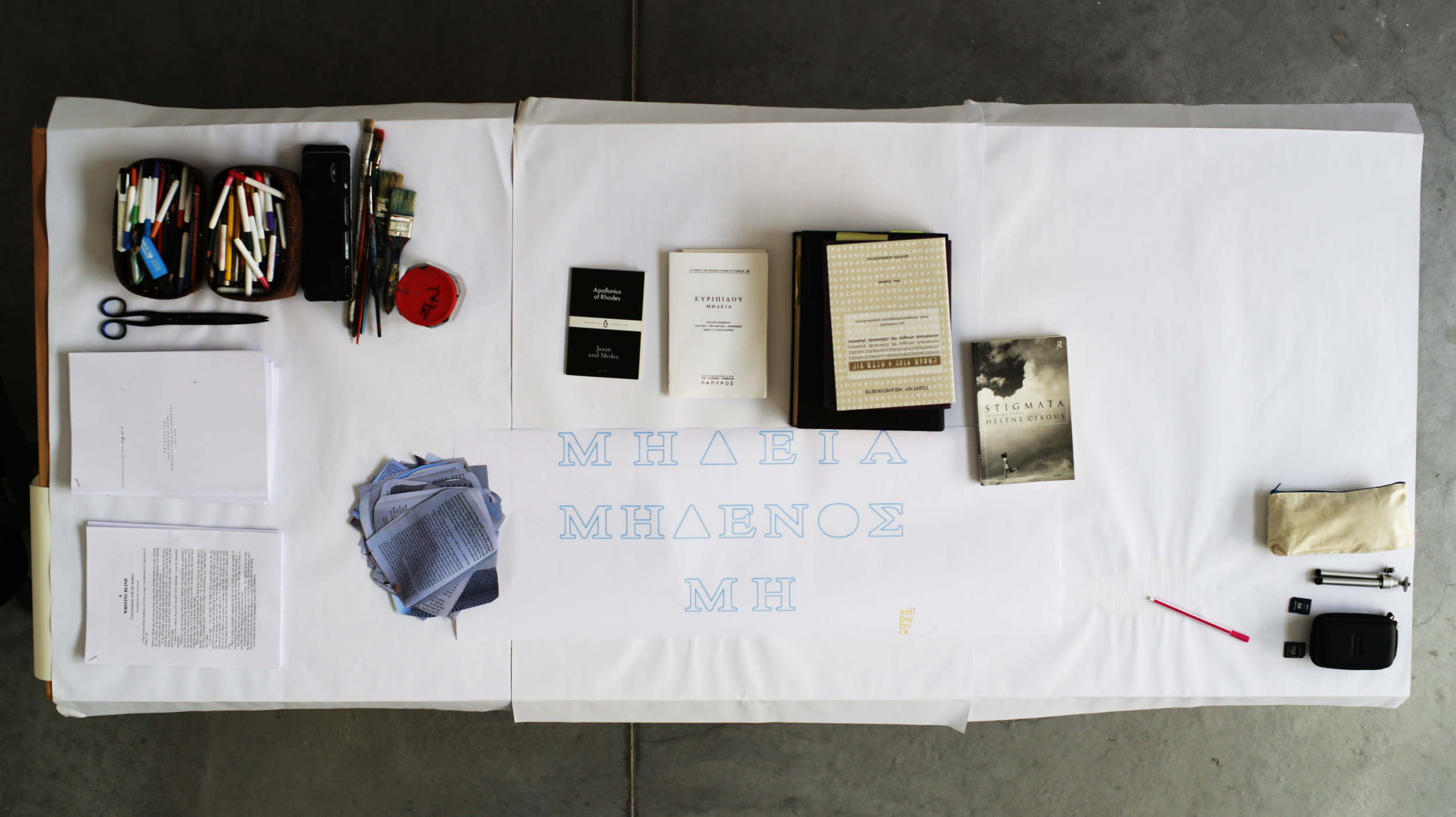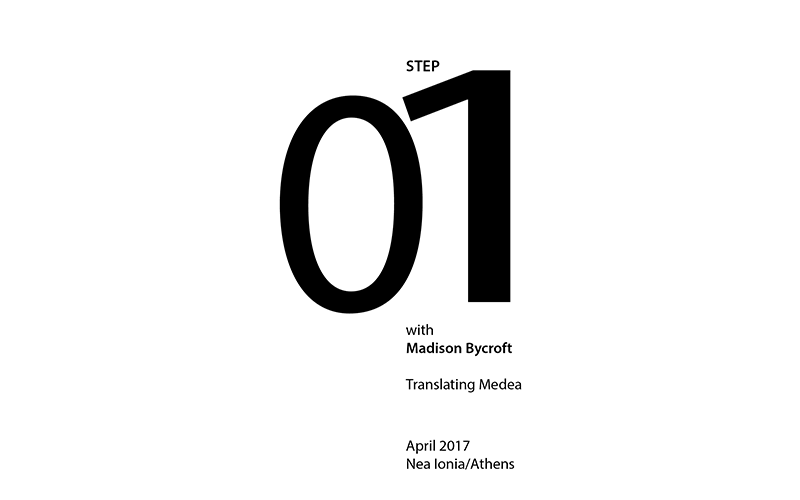Translating Medea is a year-long self-directed intensive period of research and development. The project includes theoretical and practical research, a residency, workshop and exhibition/project communication across four localities: Athens, Marseille, Rotterdam and Adelaide. Translating Medea takes as its core expanded notions of translation, the translated, the untranslated and the untranslatable.
Using Helene Cixous’ eleven page untranslated French text Apres Medea as source, Madison invites ten different groupings of people to work with her to “translate” a page each. The “target” can take one of many many forms, and has no loyalty to traditional translation techniques: a script that results in an animation, a conversation, a video essay, a fiction, an image, a performance or none of these. Bycroft envisages each chapter being of a collaborative nature, and she takes the role of a guide or facilitator as well as a collaborator, throughout each.
Each group functions slightly differently to accommodate geographical situations, familiarity between participants, and particular interests. Each group however, immerses itself with a series of texts and other media to help contextualise and hold Apres Medea. This “environment” is initially suggested by the artist, but unfolds and evolves collectively.
Both chapter 5 and 6 took place and were developed in Athens, at Yellow brick.
Translating Medea, CHAPTER 6
Translation in collaboration with Vasiliki Sifostratoudaki and Madison Bycroft in the context of the Yellow Brick project in an attempt to understand the “frame” of logos/ language.
How can materials create a space for listening, for receiving? How can we take up space, to make space? Vasiliki and Madison created a material installation to be moved in during a translation workshop and performed in once the translation takes place. The installation is thus activated by the movement of bodies through space, and yet at the same time is activating, as an environment from which things can emerge. The work is prefaced by conversation and collective reading.
Texts of initial interest include excerpts from:
Felix Guattari: Chaosmosis
Marguerite Porete – Mirror of Simple Souls
Gayatri Chakravorty Spivak – the Politics of Translation
“…the true work of translation is to grapple with the untranslatable: that element….that will never (fully ) surrender to translation’s siege.” – Eric Prenowitz
Translating Medea, CHAPTER 5 (Athens) is a two day intensive *working* around expanded and experimental forms of translation. Translation approaches a limit, and beyond the limit, something unknown. At Yellow Brick we explore different methods of approaching the textual/foreign body: alignment, attunement and invocation, as well as methods of departing from a text: what might it mean to inhabit a mystic translation process, where meaning or source remains concealed, and the readers ignorance privileged.
Reading together serialises the text spatially into a temporal sequence. Through the collective translation processes we generate a multiplicitous reading subjectivity whose body harbours a wealth of corporeal wisdom. Through Τranslating Medea, we develop different strategies for building, assembling, uncovering and surrendering to meaning. We explore traditional modes of translation, as well as focusing on extra-textual methods of gesture, asymbolic sound and empathetic rhythm, that might help us perform indices, enact grammar or embody accents or emphases.
Bibliography:
Hélène Cixous: Writing Blind – Conversation with the Donkey
Anne Carson: Decreation – How Women Like Sappho, Marguerite Porete, and Simone Weil Tell God
Thomas the obscure – Maurice Blanchot(excerpt)
On Learned Ignorance – Nicholas De Cusa
Supported by:


